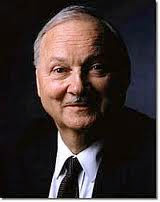IS CLIMATE CHANGE RESPONSIBLE FOR THE CONFLICTS WE’RE SEEING AROUND THE WORLD TODAY?
This was originally published in ensia on the October 15, 2019. The article is by John Vidal @john_vidal Environment editor
— “This is where I keep my weapon,” said Lolem, a young Karamojong cattle herder. Digging below the surface of the bone-dry ground in northern Uganda, he drew out an old AK-47 and some bullets, wrapped in plastic bags.
“The last time I used it was nearly two weeks ago. We were attacked by some raiders from Kenya at night. We shot at them but no one was hurt. Now the Ugandan army wants us to give up our guns, but we need them to survive.”
Pastoralists in this region have clashed for decades over water points and pasture lands, but in 2011 when I visited Lobelai, parts of Africa were facing their worst drought in 60 years. The pastoralist Karamojong communities and their neighbors in northern Kenya and South Sudan were desperate for water and pasture for their vast herds. There were regular skirmishes, sometimes turning into fierce battles with people being killed trying to defend their cattle.
In recent years, climate change has added to the volatile mix of extreme environmental conditions. Increasing numbers of climate-linked disasters, including desertification, more frequent and intense droughts, heavier rains, and flash floods have added to tensions, and the relatively small-scale clashes that have long taken place between clans, especially in the dry seasons, have become more serious.
But is the increase in violence because of climate change and more intense droughts, floods and other impacts? Because weapons have become more powerful? Because governments are hostile to nomads? Because of poverty?
There is no consensus among policymakers, security analysts, academics or development groups who work in the region.
Although conflict between clans has been part of life for years, I heard no one dispute that droughts have increased, grazing lands have shrunk and temperatures have increased, leading to more competition for pasture land and water.
“We see more droughts and floods now,” said herder Moding Ngolapus. “The land can support fewer cattle. We must take our cattle further afield, but now we are in more danger. We must defend ourselves more now.”
Meanwhile, conflict and insurgency around the world are increasingly linked to ecological collapse, resource depletion and temperature change. Some scholars say that conflicts in Somalia, Yemen and Syria have their roots in unusual and exceptionally long droughts.
An international group of scholars recently concluded that severe climate change will lead to more conflict in the future. But disentangling higher temperatures, drought and sea-level rise from other factors is difficult. Even though a link between climate change and violence is supported by many independent studies, there is little hard scientific evidence to directly link the two, says Alex de Waal, executive director of World Peace Foundation at the Fletcher School of Law and Diplomacy at Tufts University, who studied drought and famine in Darfur in the 1980s.
Broadly, some researchers argue that the increasingly erratic and extreme climate acts as a trigger for violence and extremism in fragile states. Others argue that bad governance, corruption, existing ethnic tensions and economics are much more important. At most, say these researchers, climate change is a “threat multiplier.”
The debate is intense and the evidence on both sides, contested. Yet conclusions are used by politicians and security experts at the highest levels of the United Nations, the global military, and security and climate think tanks.
Catalyst for Conflict?
The rift between these two camps appears to be due to the depth at which researchers collect evidence and the context in which they work. When independent anthropologists, development experts and people with on-the-ground knowledge of the politics and background of individual conflicts explore the issue, they usually identify climate as just one factor among many. Lack of development and bad governance, they say, are more important as drivers of conflict.
Others, though, say climate is more directly involved.
CNA’s Military Advisory Board, a group of retired military officers that studies current issues and their impact on America’s national security, has argued that climate change poses a serious threat to U.S. national security and is becoming a “catalyst for conflict” — not just a threat multiplier — in vulnerable areas and a possible contributor to disputes in the Arctic.
The debate has raged since 2007, when then–U.N. Secretary-General Ban Ki Moon wrote that “the Darfur conflict began as an ecological crisis, arising at least in part from climate change,” adding that “[i]t is no accident that the violence in Darfur erupted during the drought. Until then, Arab nomadic herders had lived amicably with settled farmers.”
Later, a 2011 U.N. Environment Programme (UNEP) study linked climate change to recurrent conflict throughout the Sahel region: “The impacts of changing climatic conditions on the availability of natural resources, coupled with factors such as population growth, weak governance and land tenure challenges, have led to increased competition over scarce natural resources — most notably fertile land and water — and resulted in tensions and conflicts between communities and livelihood groups,” the report read.
Others supporting this line of thinking over the past decade or so include influential development economist Jeffrey Sachs, the U.S. Department of Defense and the U.K. government’s former special representative for climate change John Ashton.
“It doesn’t take a genius to work out that as the desert moves southwards there is a physical limit to what [ecological] systems can sustain, and so you get one group displacing another,” former UNEP executive director Achim Steiner told the Guardian in 2007.
Other academics studying the roots of conflicts have also reached the conclusion that climate change is driving conflict. Although warning that “[d]rawing lines of causation between climate change and conflict requires caution,” a 2011 report on Nigeria by the United States Institute for Peace did find that “there are grounds to believe Nigeria’s changing climate could lead to violence.” Author Aaron Sayne described a “basic causal mechanism: an area, be it a region, population, or sector, sees some climatic shifts; poor responses to the shifts lead to resource shortages; poor responses to the resource shortages heighten one or more structural conflict risks.”
One of the largest studies, published in 2015, linked the frequency and variety of human conflict types to temperature increases. Stanford university scientist Marshall Burke and colleagues reviewed 55 studies looking at all sorts of conflict, from assault to riots to civil war. They concluded “that large variations in climate can have large impacts on the incidence of conflict and violence across a variety of contexts.” Others have found violent crime in cities increases during heat waves.
Still other researchers have found that drought can push tensions over a threshold into violent conflict. This, they say, was a trigger for the ongoing Syrian war, which followed a long dry spell that forced farmers to leave the countryside for cities.
In one 2014 study, Nina von Uexkull, an assistant professor at Uppsala University in Oslo, investigated civil conflict and drought in sub-Saharan Africa over 20 years and saw the links. “[A]reas experiencing sustained droughts or depending on rainfed agriculture are more likely to see civil conflict following drought as individuals in these regions are more likely to partake in rebellion in order to redress economic grievances or to obtain food and income,” she wrote.
“The potential for conflict over disappearing pasture and evaporating water holes is huge,” reads a 2010 U.N. disaster risk reduction paper. “The southern Nuba tribe have warned they could restart the half-century war between North and South Sudan because Arab nomads (pushed into [Nuban] territory by drought) are cutting down trees to feed their camels.”
The Case for Other Factors
Others disagree. Some took exception to the idea that environmental factors drove specific conflicts in the Sahel region of Africa, arguing that factors such as pressure on herders from agriculture, “political vacuum” and corruption are more important.
Back in 2007, de Waal dismissed Ban’s analysis as “simplistic.”
“Climate change causes livelihood change, which in turn causes disputes. Social institutions can handle these conflicts and settle them in a non-violent manner—it is mismanagement and militarization that cause war and massacre,” he wrote.
Today de Waal says there is no new evidence to directly link climate change and conflict.
“There has been an uptick in conflict in the past 10 years, but it is still in overall decline,” he says. “Everywhere you look at a specific conflict there are a whole lot of determining factors. In some you can identify a climate element. In Syria there was a drought exacerbated by poor water management coinciding with a spike in the price of world food, which was not climate related but due to commodity speculation. [Conflict] is never due to one factor; always many. A lot of research is by people looking for simplistic, causal links,” he says. “However, it is true that climate change is generating more extreme events and makes it more likely that bad things will happen.”
Halvard Buhaug, research professor at the Peace Research Institute Oslo (PRIO), has studied civil wars in both Africa and Asia and has written that he finds no causal links with climate on either continent.
“[C]limate variability is a poor predictor of armed conflict. Instead, African civil wars can be explained by generic structural and contextual conditions: prevalent ethno-political exclusion, poor national economy, and the collapse of the Cold War system,” he wrote in the journal PNAS. “The primary causes of civil war are political, not environmental, and although environmental conditions may change with future warming, general correlates of conflicts and wars are likely to prevail.”
Hakim Abdi, a researcher at Lund University in Sweden, refutes research that climate has played a part in the Somali conflict.
He wrote in The Conversation in 2017: “Conflict in Somalia has deep political roots that go back decades. … [A]l-Shabaab takes advantage of the hunger and desperation caused by drought. In this way, climate worsens the conflict by giving al-Shabaab more manpower. … It is wrong to blame climate change for famine and conflict. These can either be prevented, or the impact minimised, if institutions and mechanisms of good governance are in place.”
Surprising Unanimity
Faced with such seemingly huge disagreements, it is hard to determine climate’s role in present conflict, says Katharine Mach. An associate professor at the University of Miami Rosenstiel School of Marine and Atmospheric Science, Mach is lead author of a recent paper in Nature that questioned 11 prominent conflict and climate researchers, including political scientists, economists, geographers and environmental academics.
Beneath the initial dissent among them, she says, she found “surprising unanimity” that climate can and does determine the risk of organized armed conflict. But in specific conflicts, the role of climate was judged to be small compared to other drivers.
“Across the experts,” Mach and colleagues wrote, “best estimates are that 3–20% of conflict risk over the past century has been influenced by climate variability or change.” But, they also wrote that the risk of conflict is likely to increase as climate change intensifies. “As risks grow under future climate change, many more potential climate–conflict linkages become relevant and extend beyond historical experiences,” the wrote.
“The scholarship is confusing,” Mach says. “It can be very convenient for politicians to say that a conflict is because of climate. The state of knowledge is limited. Everyone put climate change pretty low on the list of importance [but] at the same time we found strong agreement among experts that climate — in its variability and change — does influence the risk of organized armed conflict. But other factors, such as the capacity of the state or levels of socioeconomic development, play a much larger role at present.”





Comments
Post a Comment